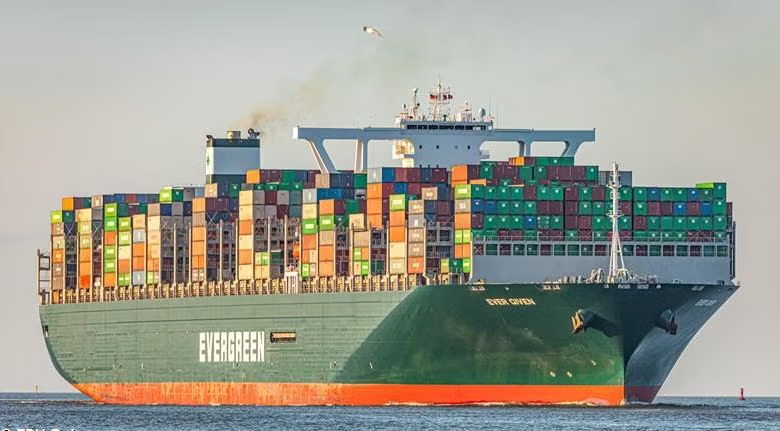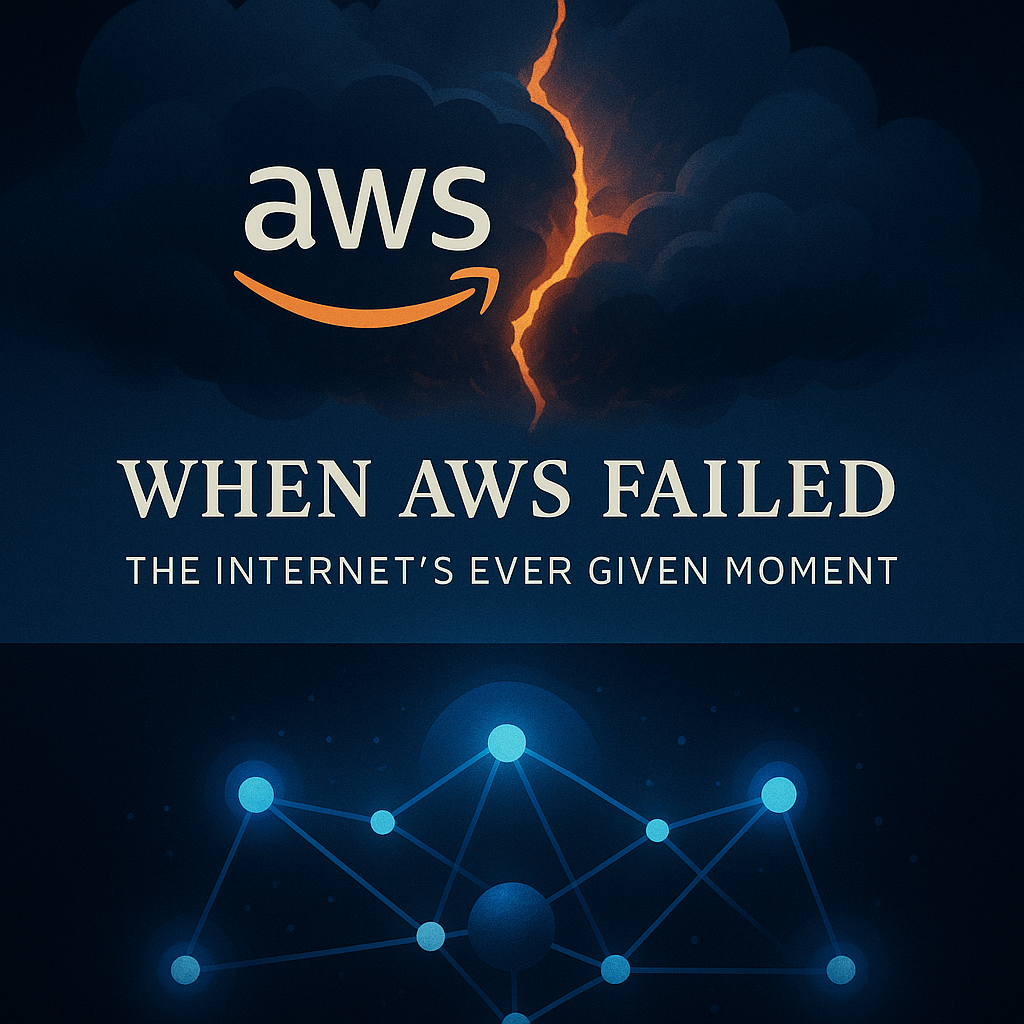By BitVision.ai | Michelle Tan
At 7:40 a.m. on March 23, 2021, the world’s most expensive traffic jam began with a bad left turn.
A container ship named Ever Given — four football fields long and 200,000 tons of steel and capitalism — turned sideways in the Suez Canal. Within minutes, it had jammed itself between two continents, sealing off the artery of global trade.
For six days, $9 billion worth of goods went nowhere. Factories ran out of parts. Ports backed up. And somewhere in Wisconsin, a man waited in vain for his inflatable hot tub — while his neighbor’s was already bubbling.
It was absurd. It was poetic. And it was a mirror.
The Ever Given didn’t just block a canal; it revealed how over-optimized and under-resilient our world had become — a global economy built for perfection, not disruption.

⚙️ The Industrial Reformation: When Spreadsheets Became Dashboards
The chaos of the Suez spillover triggered a technological awakening. Overnight, real-time logistics shifted from a corporate buzzword to a global necessity.
Companies like Flexport, project44, and FourKites experienced a surge in demand. Ports deployed AI-powered cranes, autonomous scheduling systems, and digital twins of container yards.
“Supply chain visibility” became the sexiest phrase in boardrooms.
Because when you can’t move 200,000 tons of steel, you learn fast that you need better data — not just better luck.
It marked the beginning of a new Industrial Reformation, where resilience, transparency, and real-time analytics replaced blind efficiency as the ultimate goal.
☁️ The Internet’s Own Suez Canal
Fast-forward to October 2025. The Internet had its Ever Given moment.
A single misconfiguration in AWS US-East-1 — Amazon’s busiest cloud region — froze a third of the modern web. For approximately 15 hours, hundreds of applications, financial platforms, and services went offline, affecting more than 11 million users.
It didn’t take long for the parallels to sink in.
The world had built its digital highways on the same fragile foundations as global trade — one region, one DNS lookup, one failure point away from collapse.
Yet, as centralized clouds faltered, decentralized systems didn’t blink:
- Bitcoin kept minting blocks without delay.
- Ethereum continued processing transactions seamlessly.
- Chainlink, which powers 70% of DeFi, confirmed that its oracles remained “fully operational.”
“Uptime is the most important metric,” said Tom Lee. “Wall Street doesn’t care about speed or style — they care about systems that never go down. That’s why they’ve already chosen Ethereum.”
💥 Every Collapse Creates a Revolution
History rhymes in the rhythm of failure.
- The Long Depression of 1873 gave us modern corporate accounting.
- The Titanic gave us maritime radio law and the International Ice Patrol.
- The FTX collapse provided proof-of-reserves and sparked a self-custody awakening.
And now, the AWS outage of 2025 has given us a new North Star:
The demand for decentralized infrastructure that a single line of malicious code can’t compromise.
🛰️ The Rise of DePIN: The Internet’s Real Backbone
This is where DePIN — Decentralized Physical Infrastructure Networks — steps into the spotlight.
DePIN is more than a new crypto narrative; it’s the architecture for the next Internet.
Thousands of distributed nodes — not a single cloud region — delivering compute, bandwidth, sensors, and energy to the world’s digital backbone.
It’s the shift from cloud monopolies to community clouds.
From “trust us” to “verify everything.”
From fragility to antifragility.
I explored this vision earlier in my article, “DePIN: The Next Big Thing in Crypto — Why VCs Are Betting Big on Decentralized Infrastructure Networks”, where I outlined how venture capital is quietly repositioning from speculative tokens to physical, revenue-generating decentralized infrastructure.
Today, that thesis looks prophetic.
When AWS went down, DePIN stood up — not with hype, but with proof.
🌍 Uptime Is the New Alpha
The Ever Given taught us that global efficiency without redundancy is a ticking time bomb.
The AWS outage taught us that the cloud isn’t infinite — it’s just invisible until it fails.
The next era of value creation will not be measured in throughput or hype cycles, but in Uptime — the single metric that defines trust in an always-on world.
In that new reality:
- Resilience is profit.
- Transparency is power.
- Decentralization is destiny.
When the cloud went sideways, the future went decentralized.
And that’s when the Internet, for the first time, finally stood upright.
BitVision.ai
Mapping the next frontier of AI, blockchain, and digital infrastructure — where Uptime is the ultimate truth.
